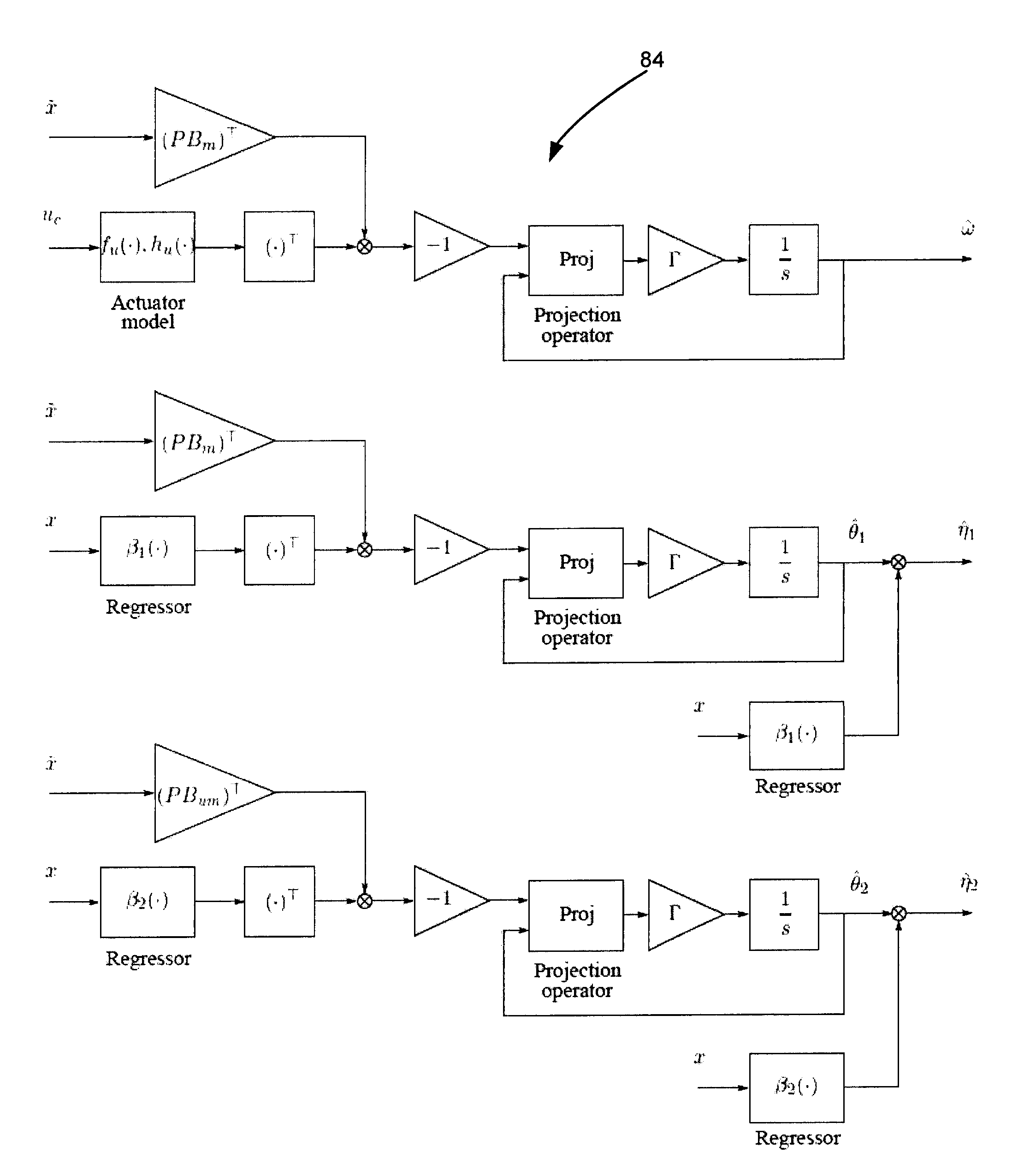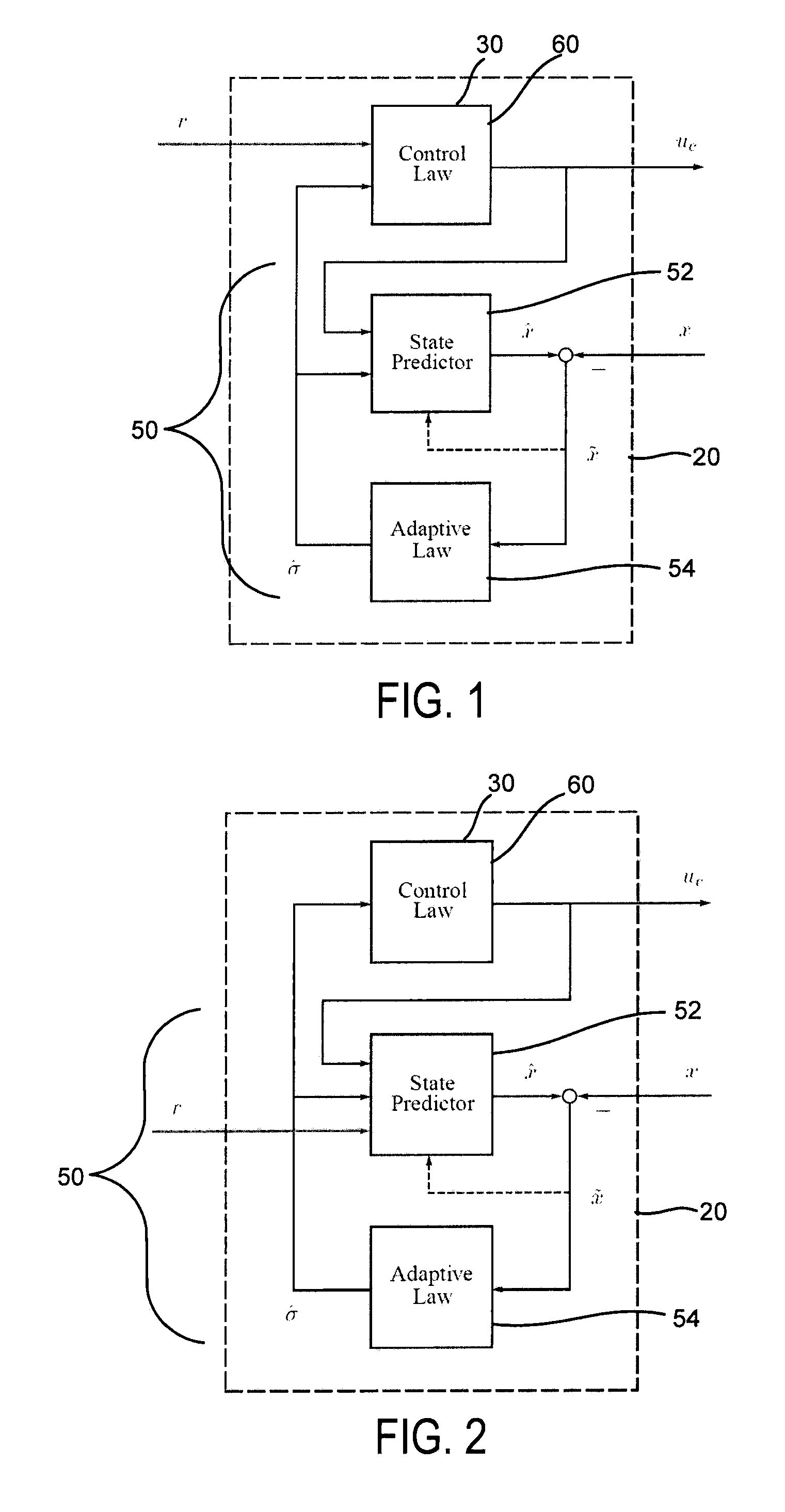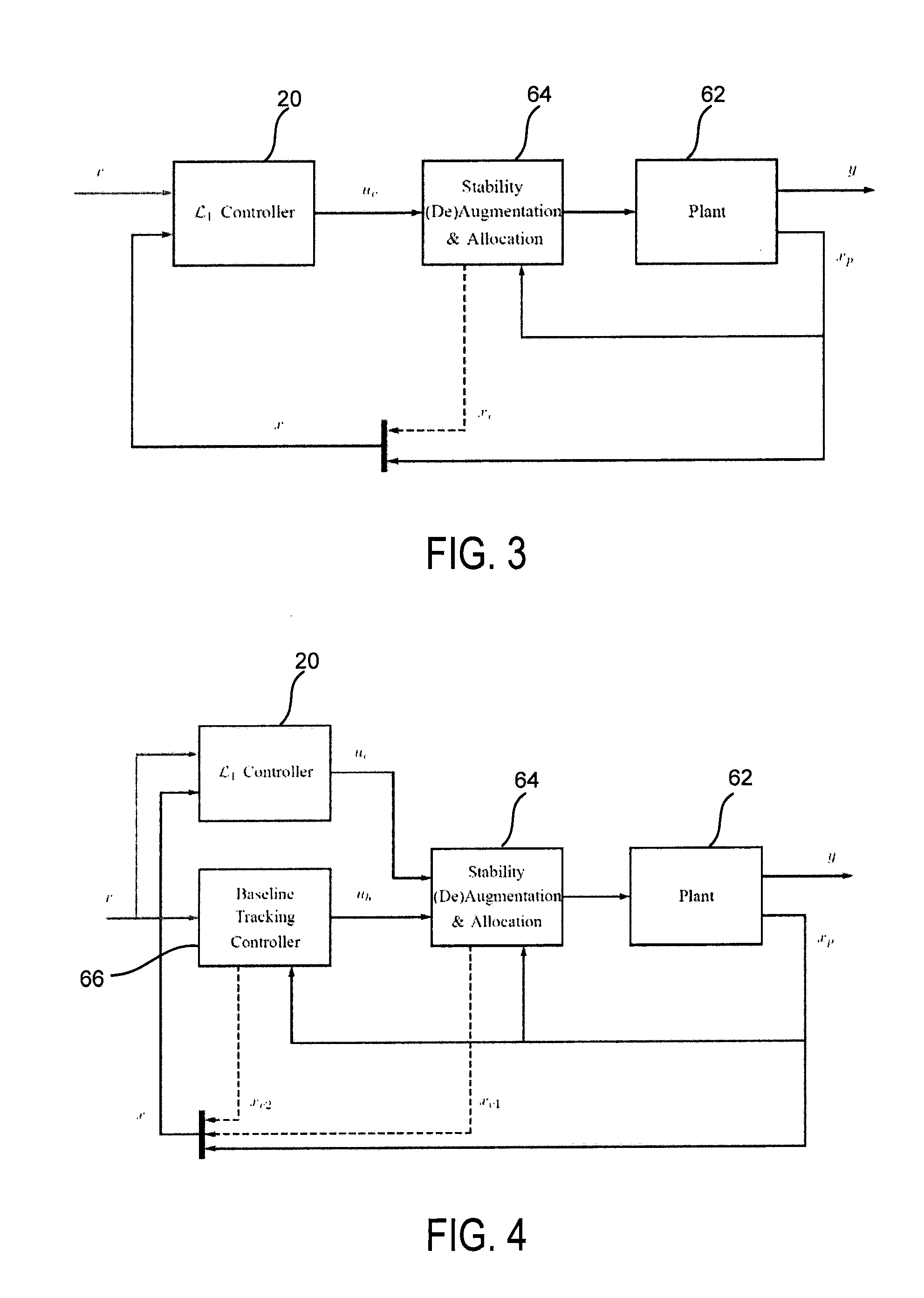Adaptive control for uncertain nonlinear multi-input multi-output systems
a multi-input multi-output system and adaptive control technology, applied in adaptive control, process and machine control, instruments, etc., can solve the problems of slow adaptive capability of aircraft autopilots, inability to compensate for significant changes in aircraft dynamics, and large gain-scheduled autopilots that are slow to adapt to changes in conditions. achieve the effect of fast adaptive control and assured performan
- Summary
- Abstract
- Description
- Claims
- Application Information
AI Technical Summary
Benefits of technology
Problems solved by technology
Method used
Image
Examples
Embodiment Construction
[0020]Referring now to the drawings wherein like reference numbers correspond to similar components throughout the several views, embodiments of the invention shall be described in the context of a multi-input multi-output state-feedback robust 1 adaptive controller that automatically adjusts certain parameters and / or signals in the control loops to achieve desired performance specifications, both in transient and steady-state, in the presence of admissible model uncertainties, disturbances, and noises. In particular, the 1 adaptive controller estimates part of these uncertainties and compensates for their undesirable effects at the output of the plant, while (similar to conventional Robust Control) the 1 adaptive controller is able to assure stability and a desired level of performance for the uncertainties that adaptation is not able to capture and adapt to.
[0021]FIG. 1 shows an embodiment of the 1 adaptive controller 20 in a standalone mode, and FIG. 2 shows an embodiment of the ...
PUM
 Login to View More
Login to View More Abstract
Description
Claims
Application Information
 Login to View More
Login to View More - R&D
- Intellectual Property
- Life Sciences
- Materials
- Tech Scout
- Unparalleled Data Quality
- Higher Quality Content
- 60% Fewer Hallucinations
Browse by: Latest US Patents, China's latest patents, Technical Efficacy Thesaurus, Application Domain, Technology Topic, Popular Technical Reports.
© 2025 PatSnap. All rights reserved.Legal|Privacy policy|Modern Slavery Act Transparency Statement|Sitemap|About US| Contact US: help@patsnap.com



